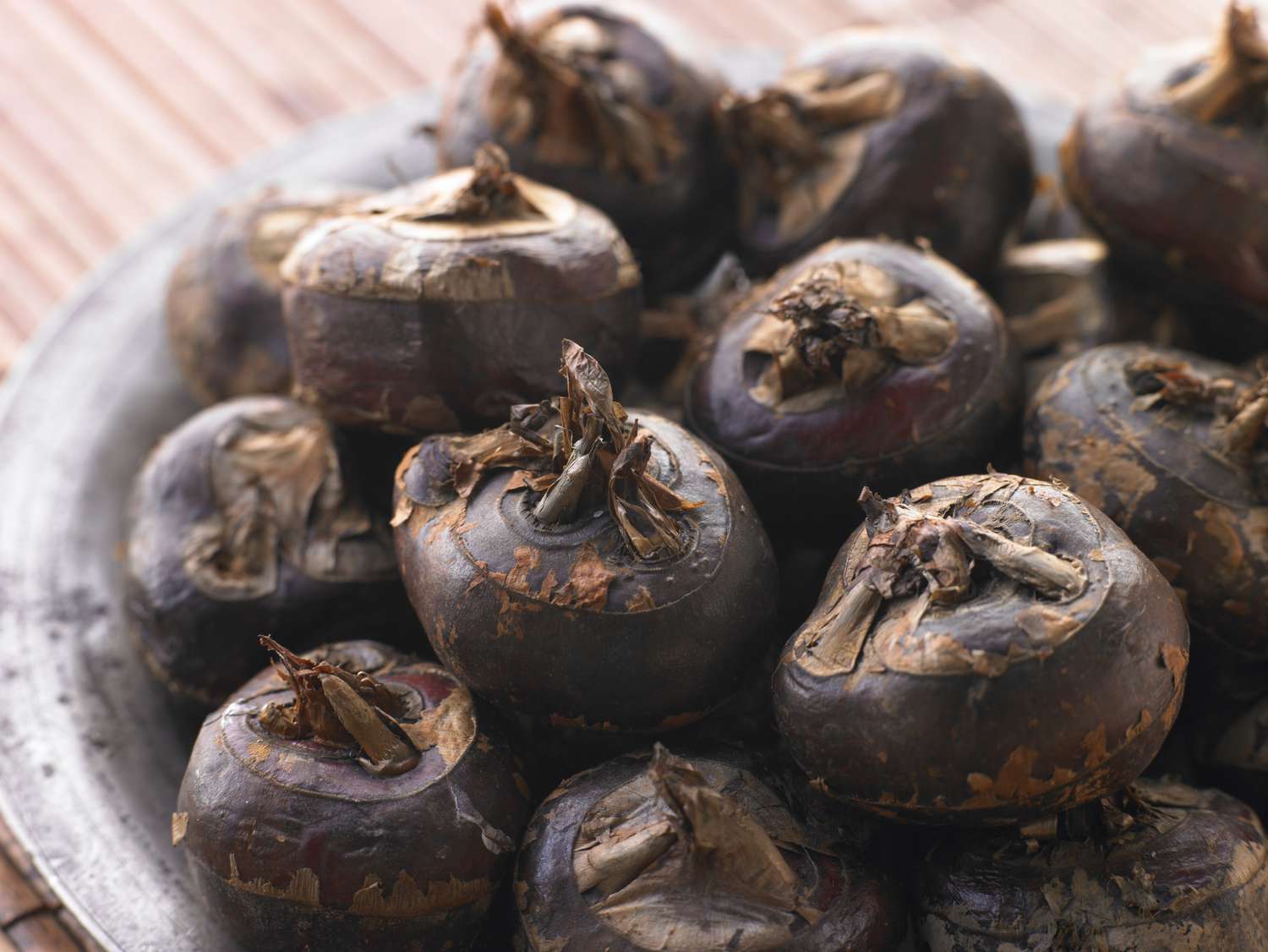
What exactly is a Chinese water chestnut? This crunchy delight isn't a nut at all but an aquatic vegetable. Grown in marshes, ponds, and paddy fields, it thrives underwater. Chinese water chestnuts are known for their crisp texture and slightly sweet flavor, making them a popular ingredient in Asian cuisine. They can be eaten raw, boiled, grilled, or even pickled. Packed with nutrients, they offer health benefits like aiding digestion and boosting immunity. Ever wondered why your stir-fry has that extra crunch? It's likely thanks to these versatile tubers. Ready to learn more about this fascinating ingredient? Let's dive in!
Key Takeaways:
- Chinese water chestnuts are not nuts but tubers with a crunchy texture and sweet flavor. They are low in calories, high in fiber, and rich in vitamin B6, making them a healthy and tasty addition to any diet.
- These versatile tubers are commonly used in Asian cuisine, adding crunch to stir-fries, texture to salads, and even ground into flour for gluten-free baking. They hold cultural significance in Chinese traditions and are believed to bring prosperity and good fortune.
What is a Chinese Water Chestnut?
The Chinese water chestnut is a unique aquatic vegetable. Despite its name, it isn't a nut but a tuber. Grown in marshes, it has a crunchy texture and slightly sweet flavor. Let's dive into some fascinating facts about this intriguing plant.
-
Not a Nut: Despite its name, the Chinese water chestnut is not a nut. It's a tuber, similar to a potato.
-
Aquatic Plant: This plant grows in marshes, ponds, and paddy fields, thriving in waterlogged conditions.
-
Edible Corms: The part we eat is the corm, which is the underground storage organ of the plant.
-
Crunchy Texture: Even after cooking, water chestnuts maintain their crunchy texture, making them a popular ingredient in stir-fries.
Nutritional Benefits of Chinese Water Chestnuts
These tubers are not just tasty but also packed with nutrients. They offer several health benefits, making them a great addition to any diet.
-
Low in Calories: Water chestnuts are low in calories, making them a healthy snack option.
-
Rich in Fiber: They are high in dietary fiber, which aids digestion and helps maintain a healthy gut.
-
Vitamin B6: These tubers are a good source of vitamin B6, which is essential for brain health and mood regulation.
-
Antioxidants: Water chestnuts contain antioxidants that help fight free radicals in the body.
Culinary Uses of Chinese Water Chestnuts
Water chestnuts are versatile in the kitchen. Their unique texture and flavor make them a favorite in various dishes.
-
Stir-Fries: Commonly used in Asian cuisine, water chestnuts add a delightful crunch to stir-fries.
-
Salads: They can be sliced and added to salads for extra texture and flavor.
-
Water Chestnut Flour: Ground into flour, they can be used in gluten-free baking.
-
Canned or Fresh: Available both canned and fresh, they can be used in various recipes.
Growing and Harvesting Chinese Water Chestnuts
Growing water chestnuts requires specific conditions. Here's how they are cultivated and harvested.
-
Marshy Fields: They are typically grown in marshy fields or shallow ponds.
-
Planting Season: Planting usually occurs in spring when the weather starts to warm up.
-
Harvest Time: Harvesting happens in late autumn when the corms are fully developed.
-
Labor-Intensive: Harvesting water chestnuts is labor-intensive, often done by hand.
Cultural Significance of Chinese Water Chestnuts
Water chestnuts hold cultural importance in various regions, especially in Asia.
-
Chinese New Year: They are often used in dishes during Chinese New Year celebrations.
-
Symbol of Prosperity: In Chinese culture, water chestnuts symbolize prosperity and good fortune.
-
Traditional Medicine: Used in traditional Chinese medicine, they are believed to have cooling properties.
-
Popular in Asia: Widely consumed across Asia, they are a staple in many regional cuisines.
Final Thoughts on Chinese Water Chestnut
Chinese water chestnuts aren't just crunchy snacks. They're packed with nutrients like fiber, vitamin B6, and potassium. These tubers thrive in marshy wetlands and have been part of Asian cuisine for centuries. They can be eaten raw, boiled, or stir-fried, adding a unique texture to dishes. Beyond the kitchen, water chestnuts have medicinal uses in traditional Chinese medicine, believed to help with digestion and detoxification. Their antioxidant properties also make them a healthy addition to any diet. Whether you're a food enthusiast or just curious about new ingredients, Chinese water chestnuts offer a blend of flavor and health benefits. So next time you're at the market, grab some and experiment with this versatile ingredient. You'll be pleasantly surprised by how much they can elevate your meals.
Frequently Asked Questions
Was this page helpful?
Our commitment to delivering trustworthy and engaging content is at the heart of what we do. Each fact on our site is contributed by real users like you, bringing a wealth of diverse insights and information. To ensure the highest standards of accuracy and reliability, our dedicated editors meticulously review each submission. This process guarantees that the facts we share are not only fascinating but also credible. Trust in our commitment to quality and authenticity as you explore and learn with us.


